













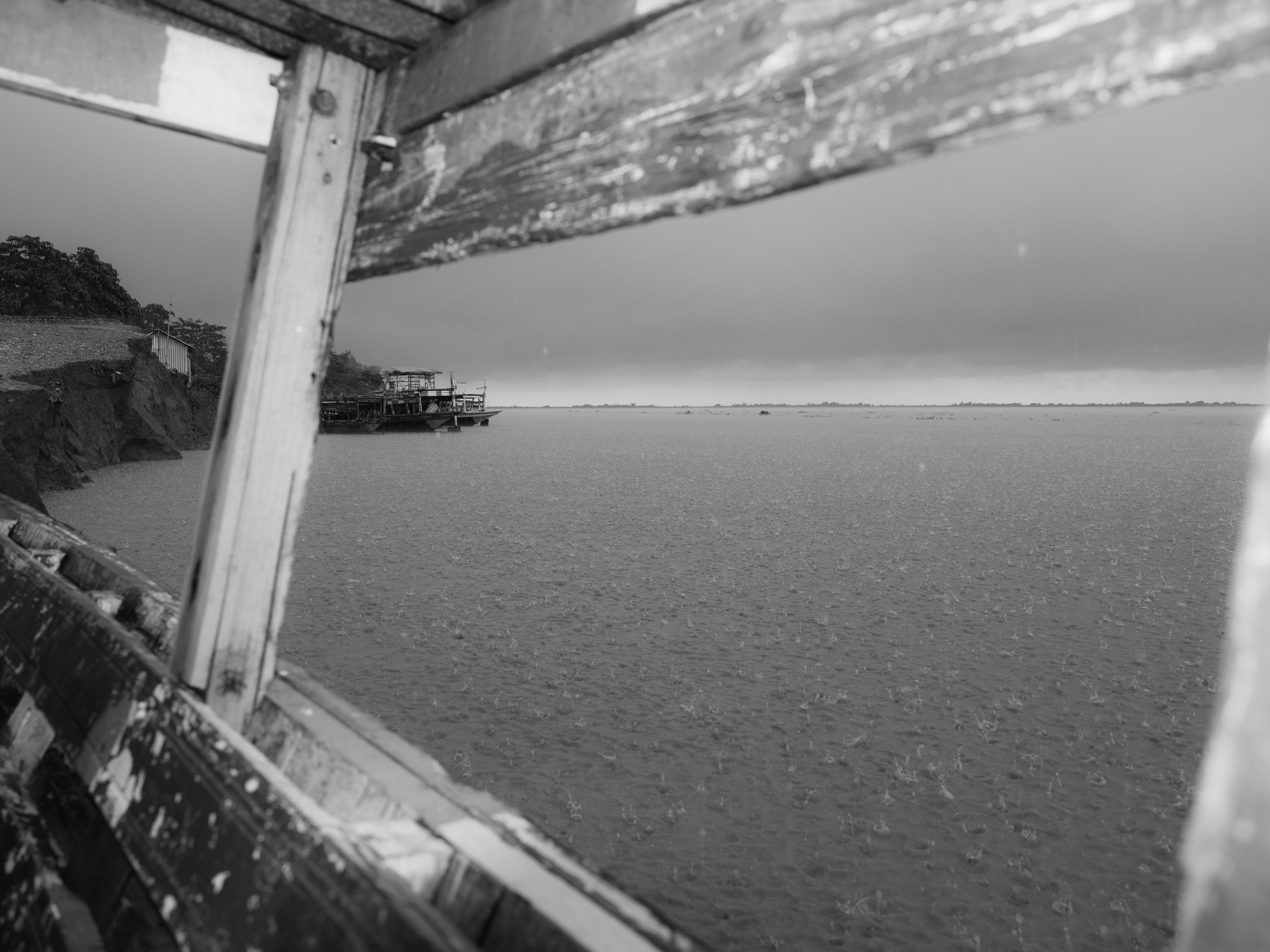



























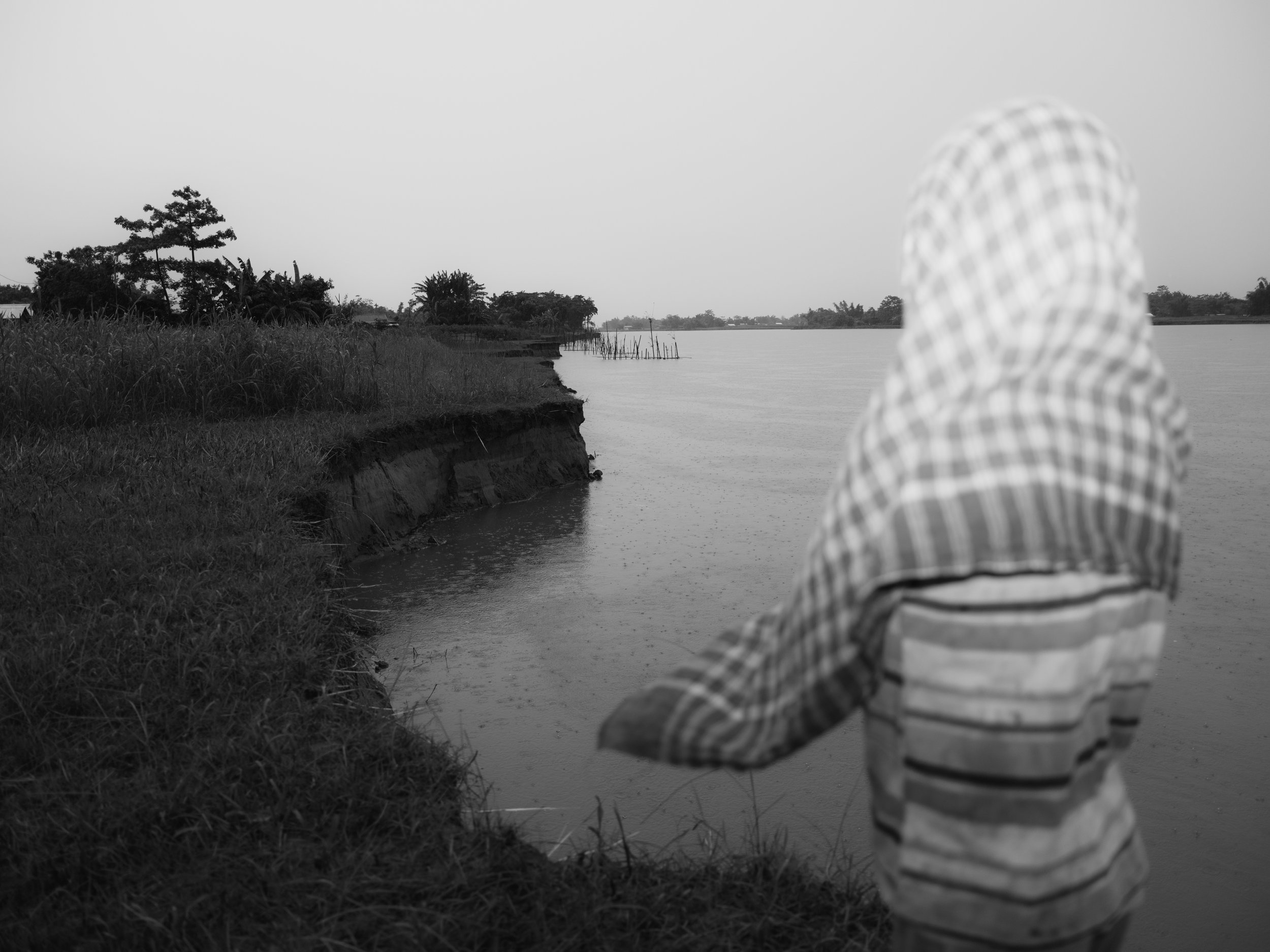


























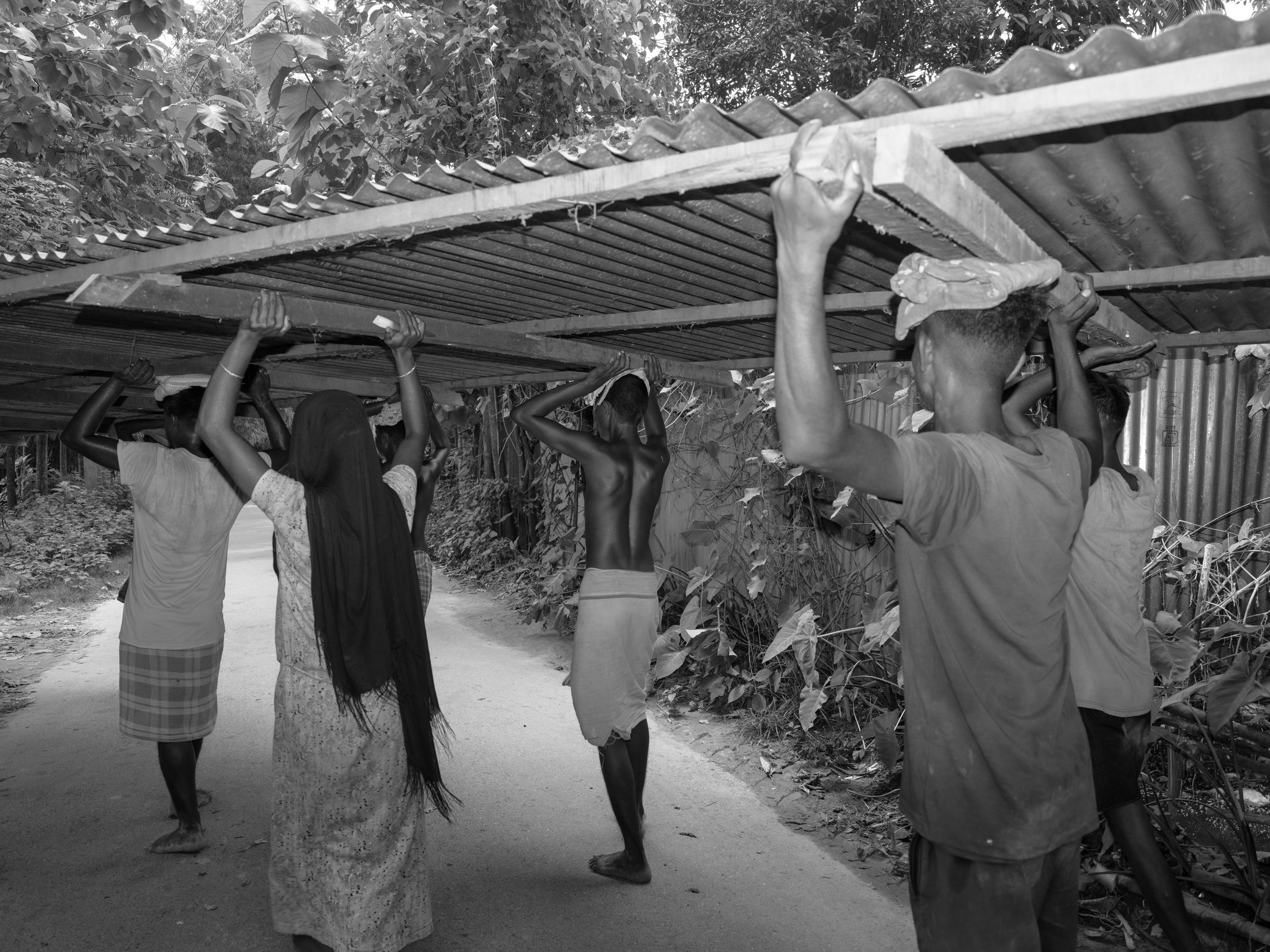
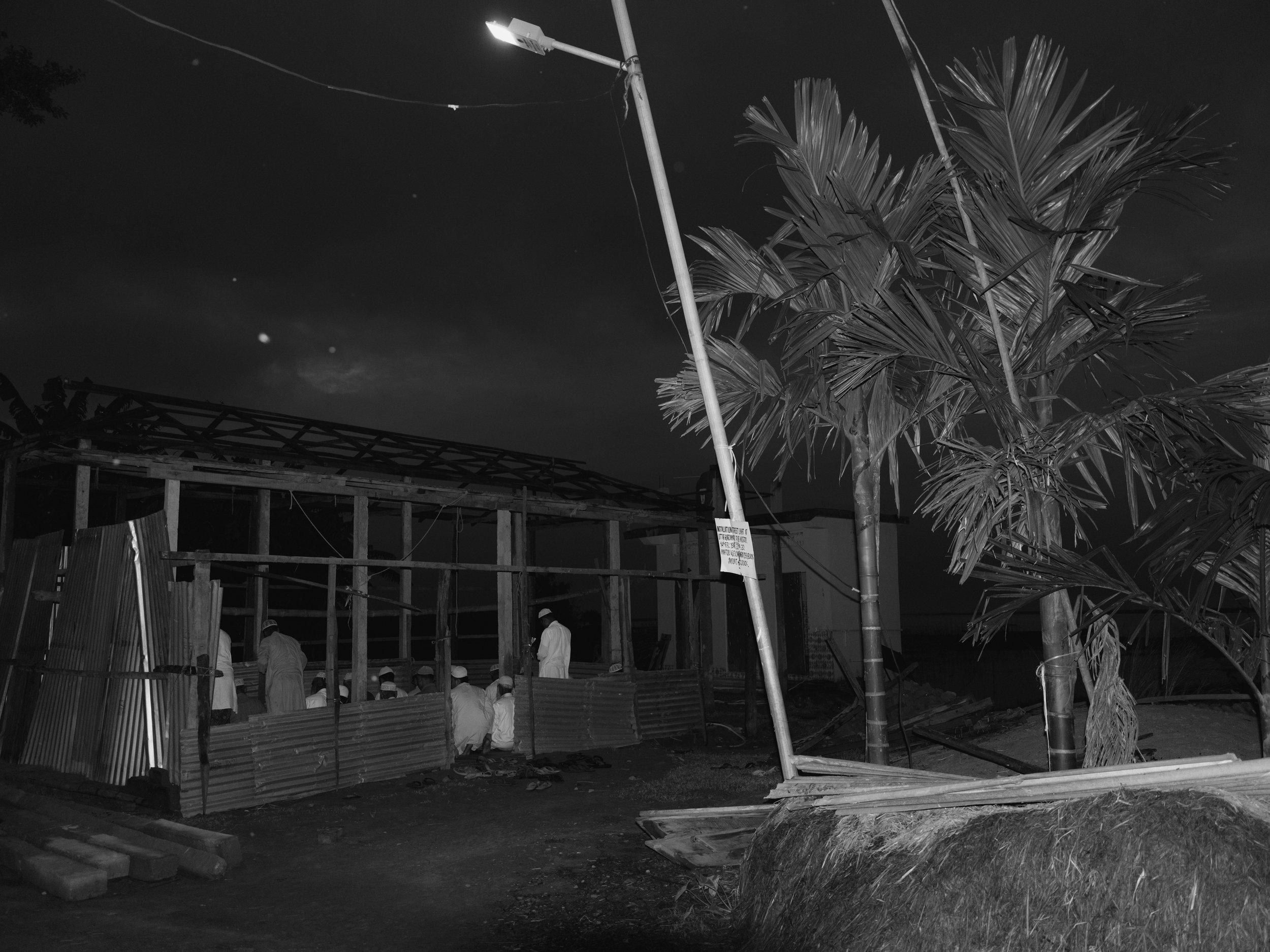



























Brahmaputra river water change intensity (1950-2015) | Tech for Conservation-WWF-India © WWF-India ,all rights reserved

PAGLA NODI (Multimedia) - Original song by Manik Ali sung by him post the major earthquake of 1950. This massive earthquake prompted the shift of tectonic plates within the Brahmaputra river basin permanently fracturing its perennial flow, causing floods and erosion, to slicing land through embankments every year, ever since...
For this experimental film, Pagla Nodi is sung by Amin Nozmul Islam, a young Miya musician who’s rendition takes on the theme of the “Mad River”, which reflects the illusion of the mighty Brahmaputra, where it may look mighty and beautiful, but it turns into a beast every monsoon, shattering the consistent dreams and aspirations of the Miya community, that live off the edge, that acts as a source of life and death, this mad river.

the edge ;

The climate crisis has steadily become a human rights issue that affects the day-to-day functioning of communities who's civilisations were born off river bodies, hence their survival now is condition to versatile measures taken today. Severe climatic shifts over decades have lead to forced yet arbitrary migration of communities from one settlement to an other, primarily the Bengali speaking muslims, also called the Miya community that have predominantly nestled themselves in the comfort of a natural ghettoisation in different pockets of Lower Assam, in Northeastern India. The Miyas have adapted their lifestyle to skilfully manoeuvre the temperament of the river Brahmaputra. These migratory patterns have become a fascinating testament and study on how climate is an undisputed element in determining one’s statehood in Assam, as the community is forced to leave behind a permanence in a sense, a prerequisite to demonstrate naturalisation in a specific area, village or district, the caveat being, the river inherently keeps snaking and shifting , transforming landmass- with that natural phenomena, intensifying the plight of the community that desperately tries to authenticate their Indian citizenship. These migratory patterns are evidence of nature's foul play that can't be combated, so the community entertains their own slow yet assured "untitled degeneration" connecting the dots of their treacherous existence, moving from one char to another... forced to occupy the fringe in isolation with questions of one's statelessness hanging in the balance..they breathe in limbo..





vanishing : the unaccountable





The treatment of brutality in the ‘natural’, particularly the Brahmaputra and the embankments in Assam as violent are unpredictable forces that speak of uncertainty and the fragility of existence. While the treacherous ecology of Assam is not new, through the escalation of the ‘The Edge’ i strive to bring a new dimension to these realities. I attempt to counter the savagery of these lived realities through the poetics of the Brahmaputra and the fate of its communities that worship it. 
Tech for Conservation-WWF-India © WWF-India ,all rights reserved


masking erosion










Tech for Conservation-WWF-India © WWF-India ,all rights reserved






Abstractions of a river gone wild.
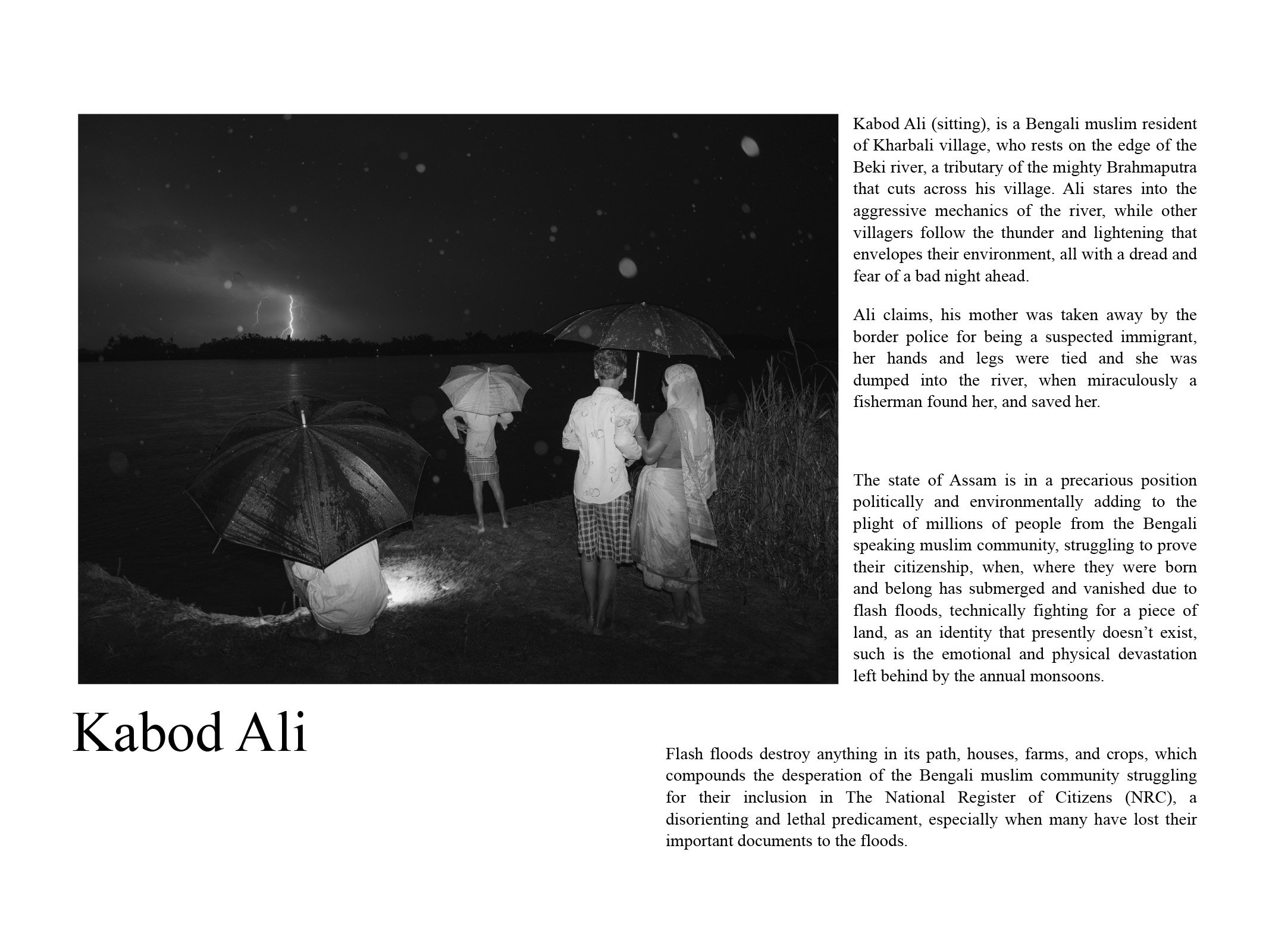









the edge ;With the kind support of the 'Shared Ecologies Photo Grant 2023', i have begun my investigation into the unique topography and climate of Assam, as i address the ecological realities of vulnerable communities, especially the Miya community in the region, who have been termed "Climate Refugees" with time. The project raises the questions of hostility and heat surrounding belonging and identity, ecological specificity, and existing precariousness to prove one's association to a piece of land as the only factual mark of their citizenship.
‘The Edge’ is a work in progress that began in early 2023 with four field trips completed during the debilitating monsoons spread over six months, with my collaborator and confidante, Amin Nozmul Islam, without whom the intensity of the production would not be possible.





The Miya community uses music and poetry as a non-violent means to talk about their plight as they touch upon themes of migration, identity, belonging, and the constant fear of being ostracised by the government and nature alike, yet they embrace their landlocked reality that is emotionally and physically contained on the margins of the state along the perfidious river. I have been working in the region with the Bengali speaking muslim community since July 2019 that largely concerned their identity crisis, but the 2023 chapter initiates a fresh discourse that highlights the cause and impact of seasonal flooding in this unique border state and its undisputed connection to citizenship, because with floods comes the fear of disappearing documents or erosion that eats away the physical, making it imperative to keep shifting, constantly dynamic like the brutal river, entire villages manoeuvre to avoid the shifting sands, one witnesses how the river slices through land, constantly eroding from one bank to deposit onto another, without design or purpose. Through Bhatiali (The Miya community uses this dialect/language which is an amalgamation of local Assamese and neighbouring Bengali dialects in specific areas within Assam, as is also used the dialect of Goalpariya in different areas of Assam.) folklore, photographs, video, and audio testimonials, i am looking to probe and truly comprehend the meaning of a climate refugee in present-day Assam, with land and identity politics playing out in real-time, that has a lasting psychological impact on human beings trying to survive the onslaught of climate change and their belonging. My endeavour is to emphasise and communicate the existential battle of drowning communities left on the fringe to fend for themselves, using the audio-visual as a means for them to take charge of their own narrative with intersection of local folklore via music being considered to address these ecological specificities of the region, especially in a state where visual and audio records can be precarious. The treatment of brutality in the ‘natural’, particularly the Brahmaputra and the embankments in Assam as violent are unpredictable forces that speak of uncertainty and the fragility of existence. While the treacherous ecology of Assam is not new, through the escalation of the ‘The Edge’ i strive to bring a new dimension to these realities. I attempt to counter the savagery of these lived realities through the poetics of the Brahmaputra and the fate of its communities that worship it. 

‘No Place called Home.’ (Short multi channel Audio-Visual clip on loop.)







Bangla folk music can be sub-divided into many categories. ‘Dhuiya gaan’ is one such category in which the above song falls. These songs follow a similar rhythm and musical pattern. They are more prevalent in rural areas. Sometimes these songs are sung by agricultural workers on the field and sometimes by a group of men sitting down in a ‘baithak’ in the evening. The primary purpose of these songs is to impart education to the listeners on the internal and external world, the composition of the body, religious rules and ideals etc. In some songs questions are raised and their answers are sought in other songs.
In the song ‘Nedu says, O brother boyati’ the singer Nedu uses his own name and raises some questions through the medium of song. The answers to these questions are sought in another song.*Nedu says, ‘O bhai boyati*
Nedu says, ‘O bhai boyati
Let me present one query
Don’t lie, answer truthfully.
With Yazid’s lineage now destroyed
What’s in the body?
Of seven stories of heaven and earth
I have heard from my teacher
On which storey is the mother creator
And on which storey is water?
Yes there are seven heavens
And 24 stages of man
Tell me again boyati,
On which storey does the sun rise
And on which sets the moon
How many crores of stars there are
Tell your ten listeners now.
And then there’s the mosque in Makkah
Where a prophet calls the azaan
Tell us boyati about them.

